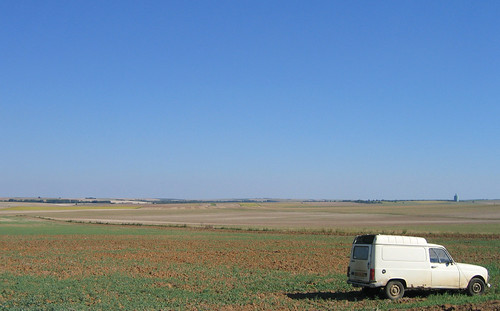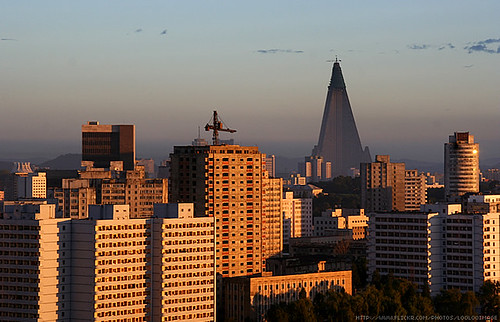Monday, November 30, 2009
Is the Catholic church a force for good in the world?
The first video features the introduction of the speakers and Archbishop John Onaiyekan, who ineffectively argues for the motion before Christopher Hitchens is introduced and begins his argument against.
In the next video, Hitchens continues arguing forcefully against the motion, and includes a trenchant response to the archbishop:
"I think it will one day be admitted with shame that it might have been in error to say that AIDS is bad as a disease, very bad, but not quite as bad as condoms...I say it in the presence of His Grace and I say it to his face: the preachings of his church are responsible for the death and suffering and misery of millions of his brother and sister Africans and he should apologize for it; he should show some shame."
Next up: Ann Widdecombe, conservative MP, who at least brings a little game to her arguments in favor of the church (her speech overlaps videos 2 & 3). Now it's getting interesting! Will this secular British audience be moved by Widdecombe's sharply acerbic debate skills?
Last comes the gentle Stephen Fry, who talks of the punishments meted out by the Church to progressives and scientists throughout the ages, and the hypocrisy of canonizing Sir Thomas More, who tortured the English for owning Bibles written in their own language. When he mentions that only nine years ago More was named the patron saint of politicians, both the Archbishop and the MP nod enthusiastically -- as if his legacy is something of which to be proud. Fry also delves into the current pope's lies about condoms, his holiness' claim that homosexuals are morally evil and disordered, and contrasts the Church with the object of its affections:
"Do you know who would be the last person ever to be accepted as a prince of the church? The Galilean carpenter; that Jew. They would kick him out before he tried to cross the threshold. He would be so ill at ease in the church. What would he think? What would he think of St. Peter's? What would he think of the wealth, and the power, and the self-justification and the wheedling apologies?"
The questions of the audience and the debaters' closing statements in the final video are definitely worth watching:
In the end, as at the beginning, the audience was polled to see whether they were for or against the motion and we get to see how many viewers were persuaded by the panel. Prior to the debate, 346 were undecided; afterwards, that number dropped to 34. 410 fewer people believed that the motion was true, and 774 more people believed it to be false. In other words, the argument that the Catholic church is NOT a force for good in the world was much more persuasive than its counterargument -- quod erat demonstrandum.
Saturday, October 17, 2009
Popularity Contest, part II
No change in the first two rankings: Horny Moses and Playboy Socks still garner the most peeks, which I concluded last year was due to internet searchers' religiosity (or religio-curiosity) and prurience, respectively.


In its first year, however, the Moses photo earned what I once deemed a "whopping" 568 views. In its second year it has attracted almost 5 times that amount: 2,807 total views. Fourteen months ago, the photo of the Japanese schoolgirl's bunny-embroidered socks had attracted 343 views; today its total is 1,586.
From this point on there are changes to the top five. Last year's #3 and #4, two pics of Japanese girls garbed in unique fashions, have dropped down to #11 and #13. As Gwen Stefani's popularity recedes into the past, so do internet searches for "Harajuku Girls".
The current #3 is Hong Kong skyline from Victoria Peak (1,276 views). This one has only recently leaped in popularity, bypassing the Chunky Monkey (see below) only a month or two back.
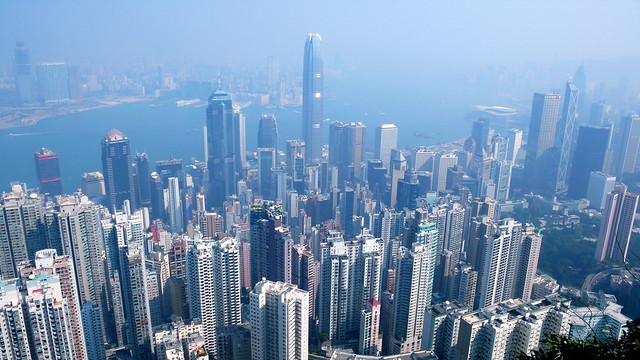
Next up with 1,173 views is Mingo, the fattest monkey on la isla de Roatán en Honduras. For some reason, there are hundreds of websurfers searching for photos of fat monkeys, and that fact has helped increase the exposure of this pic.

Finally, with 1,083 views, is a photo I took of a bamboo grove in Nara. People like looking at bamboo, I guess. That's more views than last year's top two combined.

Saturday, September 12, 2009
The day we rented bicycles in Joigny...
...and I passed out in the woods. Photo taken in Joigny, France on Monday, August 29, 2005 at 15:39pm.
BACKGROUND: I have a rather high metabolism and usually require sustenance throughout the day, but most especially first thing in the morning. If I don't eat, I get flustered and shaky, and my ability to speak eloquently or do simple math problems rapidly diminishes.
This glorious late summer day in Joigny, a small medieval town in Burgundy, I awoke and, eschewing breakfast, made pâté sandwiches with my mates, which we put into a satchel, and walked across the river to rent bicycles. Alas we were in France, and the bicycle shop didn't open until 11am. We walked to a nearby cafe and sipped espressos and cappuccinos until about half past. When we returned to the shop, not only was I famished, but also trembling from the abundantly caffeinated French coffee (I usually do decaf or tea). I was, however, determined not to break out my sandwich until my friends did, because I knew we'd be riding all day and I didn't want to consume all my nourishment too early. Thus I set myself up for disaster.
As we began pedaling, I felt dizzy and flushed with the heat of the day, slightly nauseous from the overdose of caffeine. I rode on, however, and we came to the bottom of a slight grade that rose upwards into a hill crowned by a verdant wood. I pushed as hard as I could, as I didn't want to fall behind. As we entered the grove, I began to actually feel ill and jumped off the bike. Still, I pretended to be fit and walked my ride around a bend in the road. I was well behind my friends by this time, and no longer feeling the need to keep up my charade I stumbled out of the lane, my knees knocking together, and dropped the bicycle by a tree. It was mid-day by now, and sultry; there were small flies buzzing around my face. My mouth was as hot and dry as the rubber tires. I dropped to one knee and tried calling out to my companions, but I couldn't hear my own voice through the buzzing of the gnats and the hissing of the torrid breeze through the leaves above me. I remember gripping onto the thin trunk as the world spun round, as if I were on the deck of a raft in a typhoon. My ears were roaring though there was no sound. I actually saw my vision go, like an iris-in from a silent film -- blackening from the edges inward towards the center. The forest spun violently and I was forced to let go of my mast, drifting beneath the waves of leaves and insects.
I awoke, by my calculation, only a few minutes later, groggy and sore, feeling swollen as if from a long, uncomfortable nap. I was covered with dead leaves and dirt. I couldn't be bothered to brush myself off. It took quite a few minutes before I could stand and walk again, and I only did so slowly and deliberately, one footstep at a time. I eventually came to the top of the slope and turned out of the wood onto the face of the hill, where my friends were lounging in the long grass, gazing at the rolling vineyards and the Yonne River away to the north.
Ronan: "Oh, look who decided to show up! Where've you been for the last 20 minutes?"
Me: "I felt sick...I think I fainted. You couldn't hear me calling your names?"
Chris: "You swooned? What are you, a teenage girl in a Jane Austen novel?"
Me: "Hey thanks for coming to look for me. I could have been bitten by a snake in that pile of leaves I fell into."
Ronan: "We were just saying that one of us was going to have to go back and look for you eventually -- you've got our sandwiches in your knapsack."
Thursday, August 20, 2009
featured on Apartment Therapy
In a week and a half I'm flying back up to Walnut Creek to pick up a bunch of rosewood furniture that I inherited from my grandmother, so the loft is about to undergo a major redesign. I've already sold the shoji screen, Korean tea table, and Ikea kitchen island. It'll be interesting to see how all the new (old) stuff is going to fit in. I'll upload updated photos in a few weeks.



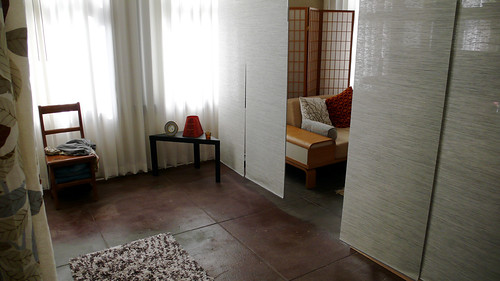

Tuesday, July 21, 2009
Homeopathic A & E
If you're unfamiliar with the concept of homeopathy, here is a good primer. It's part of a lecture by famous skeptic and magician, James Randi.
Sunday, July 05, 2009
Moonwalkers
"If Michael Jackson's moonwalk can be found in the jungles of Central America, then who knows what we might find next?" Indeed. How about a bird that can not only perfectly mimic the sound of other forest creatures, but of human-made machines as well? I give you the reclusive Australian Lyrebird, which I actually encountered in the wilds of the Blue Mountains west of Sydney. Alas, I did not hear him imitate a camera, car alarm, or chainsaw as he does here. The below clip is comes from near the end of episode 6 -- Signals and Songs -- of David Attenborough's superb series, The Life of Birds.
Last night I drove to Santa Monica to celebrate Independence Day with D*Nice and Julia. We watched a fireworks display at Palisades Charter High (see photo below) then returned to their abode to view the waxing gibbous moon through my Bushnell Voyager telescope, taking special note of Mare Tranquillitatis -- the Sea of Tranquility -- site of mankind's first real moonwalk.
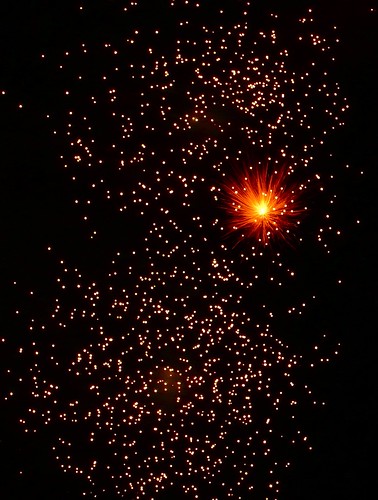
"We humans have set foot on another world in a place called the Sea of Tranquility, an astonishing achievement for creatures such as we, whose earliest footsteps three and one-half million years old are preserved in the volcanic ash of east Africa. We have walked far.
These are some of the things that hydrogen atoms do given fifteen billion years of cosmic evolution. It has the sound of epic myth, but it is simply a description of the evolution of the cosmos as revealed by science in our time. And we, we who embody the local eyes and ears and thoughts and feelings of the cosmos, we have begun at last to wonder about our origins -- star stuff contemplating the stars, organized collections of ten billion billion billion atoms, contemplating the evolution of matter, tracing that long path by which it arrived at consciousness here on the planet earth, and perhaps throughout the cosmos.
Our loyalties are to the species and to the planet. We speak for earth. Our obligation to survive and flourish is owed not just to ourselves but also to that cosmos ancient and vast from which we spring." -- Carl Sagan, COSMOS
Sunday, June 21, 2009
Friday, June 05, 2009
200 years that changed the world
Once you've viewed the clip, go to the Gapminder website to play with the graph yourself, and to create or view others. Keep in mind, however, that historical data on these statistics, especially prior to 1900, is sometimes spotty and that many of these figures are estimates.
Monday, May 11, 2009
The Path Behind Me
This is the story of my forefathers, and possibly yours as well.
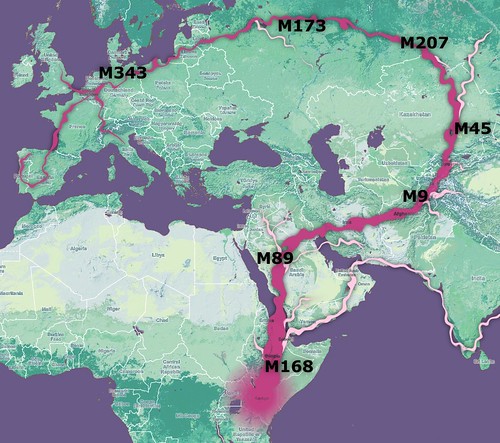
Once upon a time in the Stone Age -- about 60,000 years ago -- there lived a man who became the common ancestor of the vast majority of humans alive today. Since Christians believe that the name of the primogenitor of humanity was Adam, let's call this man the "Eurasian Adam" (though he certainly wasn't the first "man" or even the only man alive at the time). He was, however, the progenitor of all non-African people; we know this is true because we all carry his genetic marker, known as M168, in our DNA: indigenous Australians, Asians, Native Americans, and Europeans -- and most Africans as well. This "Eurasian Adam" lived in eastern Africa, where he fathered children and grandchildren, and it was his descendants who became the only lineage of humanity to endure outside of our home continent. In Europe and Asia, where Neandertals and Homo erectus thrived for millennia but ultimately died out, Homo sapiens would survive.
The first wave of modern humans emigrated from Africa soon after the M168 genetic marker appeared. They likely followed a coastal route around the future Arabian peninsula, the Indian subcontinent and southeast Asia. Sea levels were much lower due to the ongoing glacial period, and the channel between the land masses that would become Indonesia and Australia was only 90 kilometers wide; easily conquered by a nomadic people who had made their living along the maritime coast for a few centuries, or perhaps millennia. They crossed that gap and survived in their new homeland for 40,000 years, eventually to become known to western explorers as the indigenous Australians. These were not my ancestors.
Other descendants of the "Eurasian Adam" later migrated northward from their birthplace, probably following herds of animals moving in that direction during the temporary retreat of the glaciers that brought a moister climate to the African deserts. About 45,000 years ago, in northern Africa or the Middle East, one of these descendants fathered a male child with a different genetic marker, M89: riding the crest of the second wave of migration out of Africa, he was to become the ancestor of about 92% of all non-Africans alive today. Within the next few thousand years the climate shifted again and the grasslands retreated, rendering the great desert to the south impassable once more. Some of M89's descendants remained in the Near East; others migrated to the northwest, toward the Mediterranean; still others followed the animals that roamed ever north and east, to the steppes of Central Asia. Let us follow this latter group, because they are my ancestors, and probably yours as well.
The next branch in this family tree is a mighty one. Roughly 40,000 years ago, one of M89's descendants was born with another genetic marker, M9. This man, born in present-day Iran or south central Asia, was to be the ancient ancestor of almost all North Americans and East Asians, as well as most Europeans and many Indians. His descendants populated most of the northern hemisphere. Over the next few millennia, tens of thousands of people dispersed to the east and north. When they encountered the Pamir Knot, the junction of four behemoth mountain ranges that is sometimes called "The Roof of the World", some moved south while others continued north, spawning new separate genetic lineages.
We will follow the line that went north into central Asia. Roughly 35,000 years ago, when there were approximately 100,000 human beings on the planet (not counting the Neandertals still living amongst the glaciers in present-day Europe) the next link in the chain appears: M45. He lived in central Asia in the way of his ancestors, by gathering edible vegetation and by following and hunting the mammoth, bison, and antelope herds. But soon the climate shifted once more, and the expanding glaciers and reduction in rainfall may have forced the animals to abandon the southern steppes and push northward once again, with the humans trailing as always. The harsher climatic conditions may have helped spark new hunting techniques for the larger animals encountered in the north, and new technology like bone needles for sewing clothes made from animal skins. From here, some people went northeast -- this branch eventually settled east Asia, and included the ancestors of the small group who would migrate across Beringia and work their way south to become the natives of both North and South America. But my ancestors did not walk east.
The M207 genetic marker appears in a man who lived roughly 30,000 years ago, as a branch of the Central Asian clan moved west. Soon afterward, another marker appeared in my bloodline, M173. Some of his descendants would reverse their trajectory and descend southeast, some in due course making it all the way to the Indian subcontinent. But my ancestors forged ahead into Europe, part of the first wave of modern humans to do so, and survived to see the extinction of our hominid cousins, the Neandertals.
Homo neanderthalensis had been living in Europe for roughly a quarter million years, ages before our ancestors began their journey out of Africa. We did not evolve from them, but we shared a common ancestor some 500,000 years ago. They were intelligent, social hominids, and they exhibited altruism in caring for their young, sick, and elderly. They buried their dead in what some archeologists consider ritualistic fetal positions, which may be evidence for religious belief. They made tools and were well adapted to their environment, which was again changing; this time, however, they had competition.
The descendants of M173, known to archeologists as the Aurignacian culture, brought with them the technology they had developed in central Asia: tools and weapons made of stone, bone, ivory, antler, and shells. They carved figurines and wore jewelry, a possible indicator of status within the clan and a more complex society. They also possessed better techniques for communication, and they had the resourcefulness that had served them so well throughout their migrations. There was probably some form of contact between my ancestors and their much older European cousins, but there is no genetic evidence that interbreeding took place between the two species. Within the span of a few thousand years, the Neandertals were extinct.
At around this same time, one of M173's descendants sired the last known link in this chain: the man carrying the genetic marker known as M343, the defining marker of genetic Haplogroup R1b, of which I am a member. My ancestors were once known as the Cro-Magnon people, but today anthropologists prefer to call them Early Modern Humans. They wove clothing, lived in huts, made and played primitive musical instruments, and painted unprecedented depictions of wildlife in caves in southern France.
About 20,000 years ago, the Last Glacial Maximum brought ice sheets again down into the British Isles and northern Europe; to avoid the oncoming glaciers, my ancestors moved south into the Iberian peninsula, Italy, and the Balkans. About ten thousand years later, the last glacial period ended, allowing M343's descendants to repopulate northern Europe, where they thrived and eventually gave up hunting and gathering for agriculture and animal domestication. These innovations allowed for larger populations, and greater hierarchical differentiation within those populations. Clans and tribes became villages and towns. Over the course of thousands of years polytheistic religions took shape and were in turn displaced by southeastern monotheism; languages grew apart through geographical isolation; conquerers brought other foreign tongues; cities sprang up and were destroyed and rose again; in short, the beginning of recorded history was made.
Today, descendants of M173 can be found all over western Europe, with concentrations highest in northern France and the British Isles, where the marker was carried after populations had hidden from the glaciers in Spain and Portugal. I share my own haplogroup, R1b (defined by the presence of genetic marker M343), with about 70 percent of men in southern England. R1b is even more prevalent in parts of Spain, France, Scotland and Ireland, where it is carried by more than 90 percent of the male popuation. My family knows that my father's paternal heritage is American of northern European ancestry; when we delve back a few hundred years, however, the knowledge of our history dissolves into myth. We do not know for certain why my paternal ancestors left Europe for America, or even from which country they came. On which side did they fight in the Hundred Years' War? Were they aggressors or victims in the Norman invasion of England? On what chalky coast or in what verdant hinterland did they weather the Dark Ages and the Black Death? I'll never know the answers to these questions.
I find it astounding and humbling that the ancient origins of my forefathers, going back tens of thousands of years, can now be known with greater certainty than the relatively recent past. I am grateful to modern science for enriching my life and for telling me the story of my ancestors.
I wrote this blog entry with the aid of materials I printed out from The Genographic Project's website, and made the above graphic using Google Maps and Shake. Click here, here, or here to see the maps and test results of others who have submitted their DNA to the Genographic Project.
Sunday, March 15, 2009
Tilt-Shift Piracy

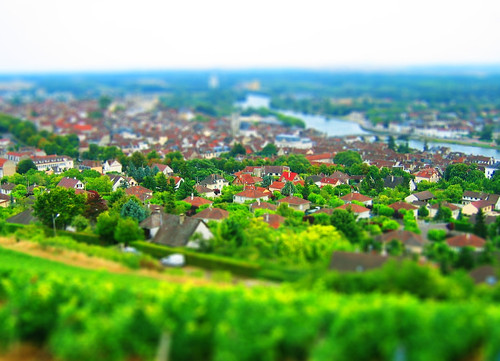



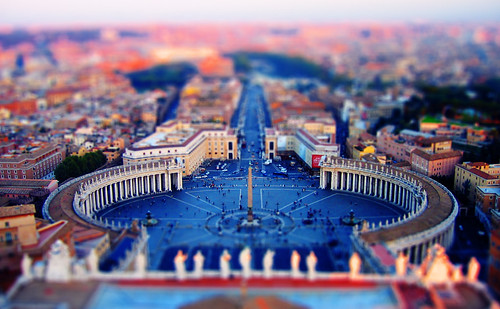
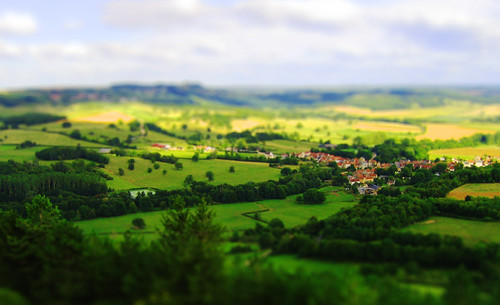
Saturday, March 14, 2009
Dubai-bye?
In 1987, the North Korean regime began work on what was supposed to become the world's tallest hotel -- the 330 m (1,083 ft) Ryugyong Hotel in Pyongyang; but it was not to be. When work was halted in 1992, it already ranked as the ninth tallest skyscraper in the world by roof height, almost exactly the same roof height as the Empire State Building. Though the superstructure was complete, lack of funding and faulty construction methods forced the abandonment of Ryugyong. For 16 years the mountainous shell of the hollow structure loomed over the North Korean capital, looking more like a jagged, decaying megalodon tooth than a hotel. Construction was resumed in April 2008 for a planned 2012 completion, and recent photos show newly installed windows on the concrete face. Windows and fittings, however, can't hide the fact that while the original plans called for a structural steel frame, that proposal was apparently rejected for its expense; according to Wikipedia, the skyscraper was built entirely out of cheaply made reinforced concrete.
In 2004, construction began on the Burj Dubai, the tallest man-made structure ever built. Its superstructure was completed in January of 2009, and it is over twice as tall as the roof height of the Empire State Building. But the recent worldwide economic collapse has smashed Dubai's bubble. In January 2009 prices in the tower fell by 50%, from a high last June of around $4000 per sq ft, a drop that is typical of other properties in the emirate. Debtors are apparently leaving Dubai in droves, abandoning their luxury automobiles at the airport. Could Dubai become the world's tallest ghost town? Will the Burj Dubai become the new Ryugyong Hotel? Click the video below to watch a CBS News report on the Dubai real estate situation:
Click here to see Skyscraperpage.com's diagram of the what world's tallest buildings will be next year: Burj Dubai is #1, of course, whether it's occupied or not; Taipei 101 -- currently the world's tallest skyscraper -- is #3; Chicago's Sears Tower (the tallest American skyscraper and former world record holder from 1974-1998) comes in at #9; The Empire State is way over on the right at #19.
Incidentally, it was announced on Thursday that the name of the Sears Tower will change to Willis Tower this June, after London-based Willis Group Holdings. A sign of the times, I suppose; the Chrysler Building, that most elegant of Manhattan's Art Deco skyscrapers, was bought last year by the Abu Dhabi Investment Council.
Monday, February 16, 2009
Happy Presidents' Day
Tuesday, February 10, 2009
Tantum religio potuit suadere malorum, part II
Tantum religio potuit suadere ignorantia
"So potent was religion in persuading to ignorance". As evidence, I give you this image:

When I found the above Google search screen capture on Digg today, I didn't believe it. Then I tried it myself (it's accurate), and even tried a different search, including Darwin's given name:

It's a sad comment on the current lack of science education in our country, as well as on the dearth of skepticism and critical thinking skills in ye surfers of the internet. This is especially poignant given the fact that in exactly two days we will be celebrating the 200th anniversary of the birth of this immensely important scientist.
Happy birthday, old chap! Terribly sorry, but it appears that your rigorously tested and eminently sound theory of Evolution, which remains uncontested in worldwide scientific literature, has fallen quite out of favor with the ignorant yet self-righteous lay public in these United States of America. A pity, that -- this country being such a technological marvel of the modern age, as well as the last superpower and all. Regrettably, two of our greatest super powers are ignorance and religiosity...always a bad combination.
Sunday, February 01, 2009
Tim Minchin
I only just discovered this "huge rock n roll megastar" today, courtesy of the Skeptics' Guide to the Universe.
Friday, January 30, 2009
Kogi Korean BBQ To Go
Last night I decided it was time to sample L.A.'s newest gastronomic fad, marinated and barbecued Korean meat wrapped in tacos and sold from a truck. It was actually Dnice, recently transplanted from the east coast, who educated me on the fusion street fare after hearing about it on Good Food last weekend.
As ludicrous as it sounds, I stood in a line of over a hundred food fiends on Wilshire and Cloverdale for 90 minutes. After the first 20 I was committed; I had made the effort to drive out to the Miracle Mile at 22:00 on a school night, and anyway all I had at home was cereal and milk. Luckily I had the latest Radiolab podcast to keep me company, and at around 23:30 I finally got to have my photo taken and place my order for 3 tacos -- tofu, spicy pork, and spicy BBQ Chicken.
The tacos were delectable -- beautifully textured toppings wedded flawlessly with the tangy, spicy meat; the overall mouthfeel was pinguid and yet perfectly crisp. As my friend Tom pointed out today, however, nothing short of ambrosia could fully satisfy after an hour and a half in the cold, but Kogi came close -- it could very well be the late night drunk food of the gods.
I can't wait for the fad to pass so I can get this toothsome treat without the long wait.
Sunday, January 25, 2009
Deconstructing Religious Violence
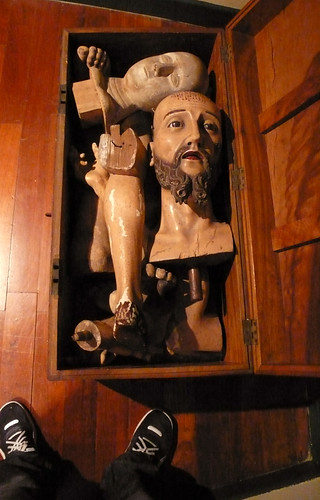
I just read The Rumpus Long Interview with Steven Soderbergh. Near the end, the director begins to lament what little effect film actually has on society's problems, and he makes a particularly insightful statement:
Any discussion about the Middle East that doesn’t start with whether monotheism is a good thing or a bad thing is an irrelevant discussion. This is all based on the fact that some people think that a certain piece of land that was host to some events two thousand years ago has magic meaning. I don’t believe that. I think dirt is dirt. Why people are still fixated on this idea of having this particular piece of dirt – I don’t understand it. That dirt isn’t worth one life to me. So you can sit and talk about who had what when and that, but it goes back to a deeper question of our need to create a narrative with this force that is acting upon us. Until we address whether that’s smart or dumb nothing’s going to get solved.
Putting aside the issue of whether stories about the middle east can be told without addressing monotheism, he's right, of course; dirt is dirt. If one were to take some gravel from the Temple Mount and display it next to some similar-looking soil taken from any other spot on Earth -- no rabbi or imam could tell the difference between the two samples. Yet Jews, Christians, and Muslims have been enthusiastically murdering one another for centuries over that soil in Jerusalem. In recent years Israelis have defended their illegal settlements in Palestinian territory by claiming that the land was gifted to them by God. There will always be trouble when deities dole out real estate, not the least because some of the affected parties consider said deity to be non-existent.
Soderbergh's assertion reminded me of an article by Lance Morrow I'd read years ago, and saved for this particular paragraph:
Two monotheisms is one too many in a small, bitter place. Jerusalem is a holy city, God help it — palpably, magically holy. That's the trouble. Holiness makes people crazy. David Ben-Gurion toyed with the idea, when Israel was just starting, of tearing down the walls of the Old City of Jerusalem — a blasphemous idea, until you look behind it to see the point: People cannot lead normal lives in a manifestly holy place, especially one so dogmatically contested. They are subject to ecstacies, and there is nothing worse than ecstatic violence, which is the form that religion may take when it goes into politics; absolutism does not like to share, and considers whatever gruesome aggressions it may commit to be justified as self-defense. Religious indignation expresses itself as massacre.
Morrow's final sentence calls to mind a particularly famous quote from Blaise Pascal's Pensées (which ironically was a defense of the Christian faith):
"Men never do evil so completely and cheerfully as when they do it from religious conviction."
I wish George Mitchell the best of luck in his new endeavor. In the meantime, I'd like to see Soderbergh remake The Passion of the Christ; I have a feeling I'd prefer his version to Mel Gibson's.
Wednesday, January 21, 2009
Tantum religio potuit suadere malorum

(Satellite image courtesy of GeoEye. Click here to view it in glorious high resolution.)
In his inaugural address, Barack Obama gave a wee tip o' the hat to atheists and agnostics:
"We are a nation of Christians and Muslims, Jews and Hindus — and non-believers."
Thank you, President Obama. My guess is that this reference to skeptics was one of your many historical firsts. At any rate, we've come a long way since 1987, when George H.W. Bush remarked,
"No, I don't know that atheists should be considered as citizens, nor should they be considered patriots. This is one nation under God."
16.1% of the U.S. population is religiously unaffiliated but, to borrow a label from Steven Waldman of beliefnet, we are the political Untouchables. It wasn't always this way, however. There were no preachers or ministers delivering invocations at either of Abraham Lincoln's inaugural ceremonies; John Quincy Adams swore his oath of office not on a Bible, but on a book of Constitutional law. While he was a religious man, Adams actually believed in Jefferson's "wall of separation" between church and the state. Like Supreme Court Justice Hugo Black, Adams was savvy enough to know that
“...a union of government and religion tends to destroy government and degrade religion.”
In fact, it is heartening to note that our Constitution, the founding document of our republic, never mentions a god and even goes so far as to state (Article VI, section 3) that "...no religious test shall ever be required as a qualification to any office or public trust under the United States," i.e., no elected official nor civil servant must profess a belief in any religion, or even a belief in any god, to hold their office. It's an ironic contrast to our most recent election, in which many of the candidates (especially the Republicans) tried to out-Jesus one other. Contrary to Fox News reports, these United States did not come together to form a Christian nation. In fact, many of our "founding fathers" actually wrote about the evils of religion in general and the Christian Bible in particular. Here are some representative quotations:
"One of the embarrassing problems for the early nineteenth-century champions of the Christian faith was that not one of the first six Presidents of the United States was an orthodox Christian." -- Mortimer Adler
"Christianity is the most perverted system that ever shone on man" -- Thomas Jefferson
"The day will come when the mystical generation of Jesus, by the supreme being as his father, in the womb of a virgin will be classed with the fable of the generation of Minerva in the brain of Jupiter" -- Thomas Jefferson, letter to John Adams, April 11, 1823
"His [John Calvin's] religion was demonism. If ever a man worshiped a false god, he did. The being described in his five points is ... a demon of malignant spirit. It would be more pardonable to believe in no god at all, than to blaspheme him by the atrocious attributes of Calvin. -- Thomas Jefferson, Works, 1829 edition, vol. 4, p. 322, quoted from Franklin Steiner.
"The divinity of Jesus is made a convenient cover for absurdity" -- John Adams
Ben Franklin wrote "The way to see by faith is to shut the eye of reason" and that "Lighthouses are more helpful than churches".
James Madison, a Unitarian: "I would not dare to so dishonor my Creator God by attaching His name to that book (the Bible)."
And Thomas Paine, from The Age of Reason (1794): "What is it the New Testament teaches us? To believe that the Almighty committed debauchery with a woman engaged to be married; and the belief of this debauchery is called faith." and "The Christian system of religion is an outrage on common sense."
Again I thank you, President Obama. It is splendid to know that a modern president can have my back, too.
